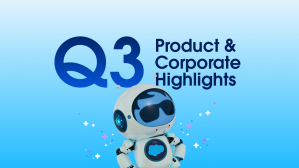Key Takeaways
- Agentforce for Public Sector is poised to transform child welfare by empowering caseworkers with comprehensive, real-time data and automating administrative tasks.
- This technology aims to reduce errors, improve decision-making, and enable systemic change through pattern recognition, ultimately leading to better outcomes for children and families.
The heartbeat of any compassionate society lies in its ability to protect its most vulnerable: its children. Yet child welfare professionals face immense obstacles, often entering homes with minimal information, rather than the critical data or tools they need to ensure a child’s safety.
This stark reality underscores the urgent need for transformation. Real-time, comprehensive data is as critical for child protection caseworkers as it is for any 911 emergency operation. With better access to this information, the entire landscape of child welfare — and its outcomes — could change.
“If caseworkers were equipped with the same information as 911 responders, the child welfare space would be a very different space indeed,” said Molly Tierney, a Salesforce Public Sector Solutions consultant and Child Welfare Industry Lead with Accenture, who has worked in public service and child welfare for over 25 years.
Tierney vividly contrasts caseworker readiness with a police officer, who arrives at a scene armed with access to car registrations, criminal records, and family histories. Caseworkers, on the other hand, lack basic, immediate data about the children and families they serve.
What’s ironic is that, back at the office, caseworkers face the opposite problem: more historical information that’s been gathered over time than anyone can reasonably process or organize.
Having to process such massive amounts of data, coupled with the absence of information during real-time home visits, puts an incredible strain on child welfare workers and leads to what Tierney described as “grave positive and negative errors.” Children are removed from homes unnecessarily or, tragically, left in perilous situations when they should have been taken out.
“We’re making all these errors, over and over again,” said Tierney. “We would make fewer errors if we armed caseworkers with even the most basic information and the ability to later process all the information at their disposal more efficiently.”
We would make fewer errors if we armed caseworkers with even the most basic information and the ability to later process all the information at their disposal more efficiently.
Molly Tierney, Salesforce Public Sector Solutions consultant and Child Welfare Industry Lead with Accenture
To address this, the child welfare sector is increasingly turning to advanced technology solutions. AI-enabled CRM tools, in particular, offer opportunities for agencies to help gather, process, and analyze disparate data so busy caseworkers can spend more time assessing and solving fundamental child-related problems — rather than struggling to collect and make sense of information.
Empowering caseworkers with a cohesive view
It’s a fundamental contradiction when entering a difficult home situation: not enough historical data (medical records, attendance records, and so on) coupled with too much on-the-spot and environmental data (like who’s in the home, what’s the child’s mood, and many more details of that nature). Caseworkers are expected to master and analyze all of it in order to make their recommendations.
Nasi Jazayeri, Salesforce’s EVP and General Manager for Public Sector, emphasizes that this process is incredibly inefficient and prone to errors. “The caseworkers have to read everything manually. They have to take their own notes, summarize everything, and so on.” This manual process is not only immensely time-consuming but also makes it challenging to maintain a consistent view of a child’s daily experiences, especially when multiple individuals may be involved.
This is precisely where agentic AI can be transformative. Built on Agentforce, Salesforce’s digital labor platform, Public Sector Solutions augments workers with intelligent AI agents that can autonomously handle complex and time-consuming tasks while staying within defined guardrails. The promise is one that fundamentally redefines caseworker productivity and has the potential to transform child welfare into a system where every decision is timely, informed by trusted data, and focused on the child’s best interests.
Child welfare agencies can use Agentforce to process and summarize historical data — like a child’s health, financial, or education information. Critically, Agentforce can then analyze this information against reports and policies and surface insights that the caseworker can then review and ask questions of, helping them make data-driven decisions faster. This drastically reduces the time caseworkers spend on administrative tasks, allowing them to focus on the critical social and emotional elements of their jobs, building rapport and understanding with families.
“We’re talking about huge spikes in caseworker productivity,” said Jazayeri, who has worked for many years with child welfare consultants in the public sector. “We’re taking the mundane off their plate so they can concentrate on human impact.”
He envisions a future where caseworkers can immediately make sense of the vast amount of information that they’ve gathered in the system to provide a cohesive view of the child’s current situation. Has the child been attending or missing school? Has the child been hospitalized or had any medical visits recently? How many people are in the child’s household, and who are they? Caseworkers must have access to and be able to interact with an enormous amount of information about the child’s profile in order to make the critical decisions that ensure children’s safety.
This comprehensive, real-time understanding is also vital because child welfare cases aren’t one-time fixes; they require long-term case management. Caseworkers need to “be on top of all of this information constantly, with every visit,” said Jazayeri, “to see what’s happening with the child’s school, with their health, with their parents, with other people who may be in the household. And they need to be on top of this potentially changing information on a monthly basis.”
Streamlining the critical intake process
A major bottleneck across many public sector agencies is the intake process — the initial gathering of information when a complaint or concern is first reported. “It’s cumbersome and error-prone,” said Jazayeri.
He recounts one visit with the head of a child welfare agency in Europe who shared a vision of a world where caseworkers wouldn’t need to type notes during calls but could simply converse, with voice-to-text and AI summarization handling the data capture. This would allow caseworkers to focus on the conversation without worrying about capturing details — which by default is imperfect.
“The current manual intake methods are prone to significant omissions and errors,” Jazayeri said. “When people are angry while reporting a complaint, they don’t speak in a calm, measured voice so that you can take good notes. They speak rapidly and often frantically, making it impossible for any caseworker to capture everything.”
Agentforce enhances child welfare by intelligently recording and transcribing conversation data, ensuring comprehensive and accurate intake information. This verbatim capture reduces subjectivity and errors while integrating data directly into a larger interactive dataset. Caseworkers can then conversationally engage with this data to gain a complete understanding of a child’s situation.
“We are talking about a transformation,” Jazayeri added, “because we are now talking about comprehensive data that can be accumulated, aggregated, and analyzed by Agentforce over time. Cases that have been going on for years, you can imagine, have so much disparate data to keep track of. With Agentforce, the long-term analysis becomes much easier, more trustworthy, and much less error-prone.”
We are talking about a transformation, because we are now talking about comprehensive data that can be accumulated, aggregated, and analyzed by Agentforce over time.
Nasi Jazayeri, Salesforce’s EVP and General Manager for Public Sector
While the child welfare data intake process remains plagued by shortfalls in human resources that affect decision-making, as well as risk assessment tools that also regularly fall short, Jazayeri asserts that these intake challenges are widespread across the public sector: “The intake process is the one area that every agency across the entire world is struggling with. By optimizing intake for even one sector, everybody benefits.”
Driving systemic change through pattern recognition
Beyond individual case management, the power of agentic AI lies in its ability to provide interactional and informational capabilities that allow for systemic change. When intake data is properly captured and harmonized, agentic AI can analyze patterns, identifying root causes of recurring issues and informing policy changes that can prevent future problems. Jazayeri describes this capability as moving beyond merely managing complaints to “decision support, pattern recognition, and overall transformation of the system.”
In child welfare, recognizing patterns that rarely result in successful family reunification, like cases involving single, addicted parents, can inform decisions about when intervention or removal may be necessary for the child’s long-term wellbeing. “If you have all the data at your fingertips,” Jazayeri said, “why not use it so that people can make the most informed decision possible? What are the patterns creating these complaints? Where are the real roots of the problem? And how might we come up with solutions to address those deeper levels?”
This ability to learn from collective data opens up wider possibilities for a more proactive approach to child welfare, moving beyond reactive responses to truly transform the larger system.
A future of hope and protection
While the journey to fully integrate agentic AI into child welfare is ongoing — Salesforce is set to pilot Agentforce for caseworkers in the coming months — the vision is clear. Salesforce, with platforms like Agentforce, aims to empower caseworkers to achieve unprecedented levels of productivity and insight, enabling them to make the best possible decisions for children and families.
“A child that spends a single weekend in foster care — one weekend — has a lower life expectancy than their peers who don’t,” said Accenture’s Tierney. “It is always better to keep a child in their own home, as long as the home is determined to be safe.”
One U.S. study covering 2003–2016 found that children who spend any time in foster care experience a 42% higher risk of death than their peers in the general population. Separately, a U.K. study of adults who had spent time in care found that they were 70% more likely to die prematurely compared with those who hadn’t.
“The amount of trauma that we’re causing by making uninformed decisions is so damning,” said Tierney.
By arming caseworkers with the comprehensive, real-time information they desperately need, Agentforce offers the potential to drastically reduce these damaging errors, keep children safely in their homes when possible, and ensure a clear path out of the system when removal is necessary.
Combining human empathy and expertise with AI-driven efficiency unlocks a future where every child has the best possible chance at a safe and stable life.
Go deeper:
- Read the Agentforce for Public Sector announcement
- Find out how a municipality in Texas used AI to rethink government services
- Discover how the Wisconsin Economic Development Corporation is using Salesforce and AI to improve efficiency, productivity, and collaboration
- See how U.S. government customers and other public sector organizations are using Salesforce




















